For Lesson Two we'll add and build on the lesson and material from lesson one.
For Lesson Two we'll add and build on the lessons and material from lesson two.
In Lesson Two you'll learn the following:
- Learning the Fingerboard, Key Fret (5)
- Secondary Chords - Key of C
- Common Chord Progressions for C Major
- Two Finger - Two Note Fingering Drills
- The Quarter Note Strum - Variations
- Whole Steps and Half Steps Explained
NOTE: Although these lessons are presented as a weekly series, you can and should take as long as you like to master each week's lesson as there is a lot of material in each lesson in the series.
The individual lessons in this series are viewable from the Lessons button bar above.
The Fingerboard - Key Fret (5)
The key frets are the three frets that have no sharp or flat notes - only natural notes. Fret (5) is C F A D from strings four to one.
- LESSON: Learning the Fingerboard, C Tuning - Fret (5)
- LESSON: The Chromatic Scale
After memorizing the chromatic scale, the seven letters and twelve notes of music we can derive the higher and lower frets from any fret we know.
If you know the open strings, G C E A you get fret (1) for G# C# F A#. Fret (12) is also G C E A this gets you fret (11) Gb B Eb Ab
From this weeks fret (5) C F A D you get fret (6) C# F# A# D# and the fret (4) B E Ab Db.
From three frets you now know over 50% of the fingerboard.
Turns out you only need five frets and you can get the entire fingerboard.
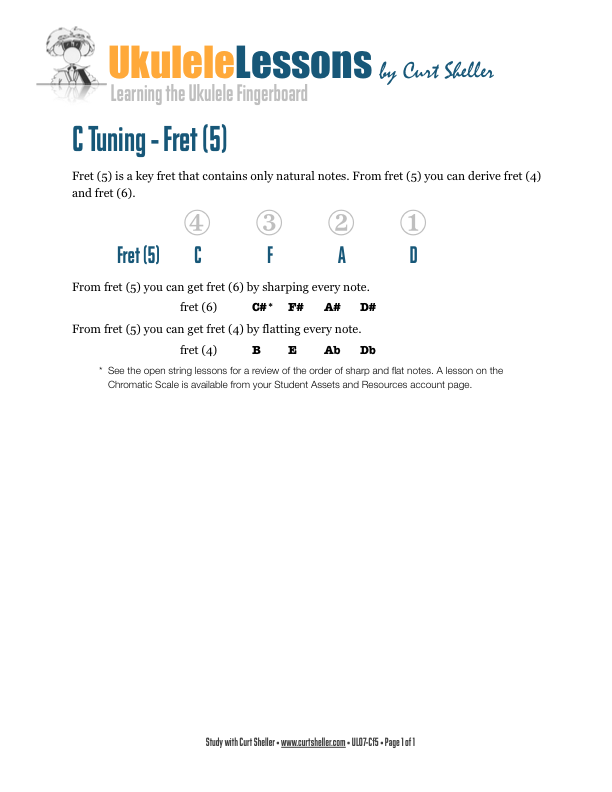
Technique - Two Finger - Two Note Fingering Drills
The Ukulele Gymnastics series contains quite a few lessons for developing your finger strength and independence of the fretting hand. The fretting hand is responsible for playing chords and single notes. The fretting hand and plucking hand are responsible for getting the music out.
- LESSON: Fingering Gymnastics
- LESSON: Two Finger - Two Note Fingering Drills
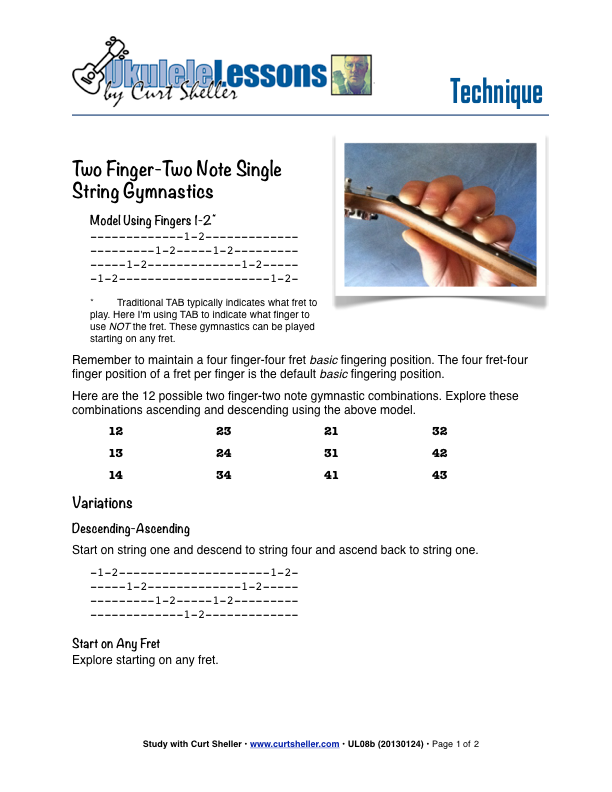
Secondary Chords - Key of C
Continuing with the common of key of C major and adding to the primary chords C, F, G and G7 from last week’s lessons. We can add the secondary chords Dm, Em, and Am.



- Series: Key Signatures - C Major and A Minor
- LESSON: Secondary Chords of C Major
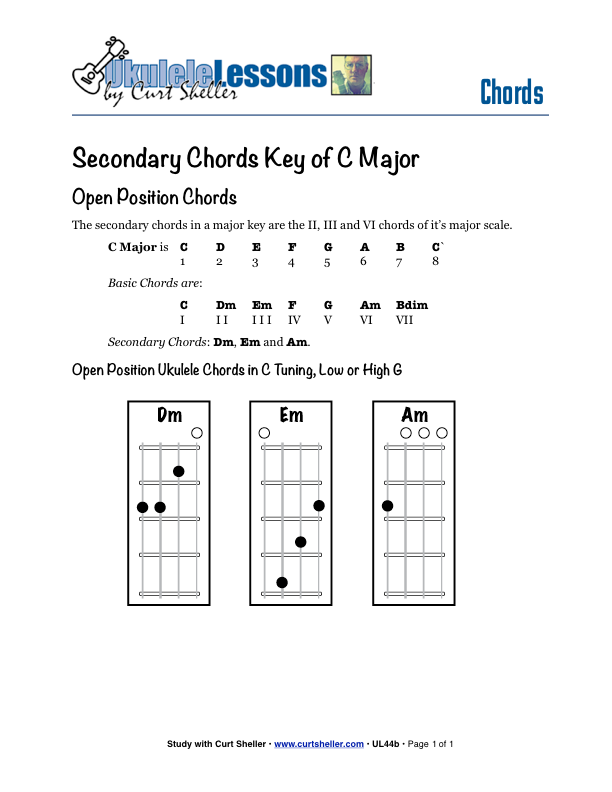
Common Progressions - Key of C
With the primary and secondary chords in the key of C.
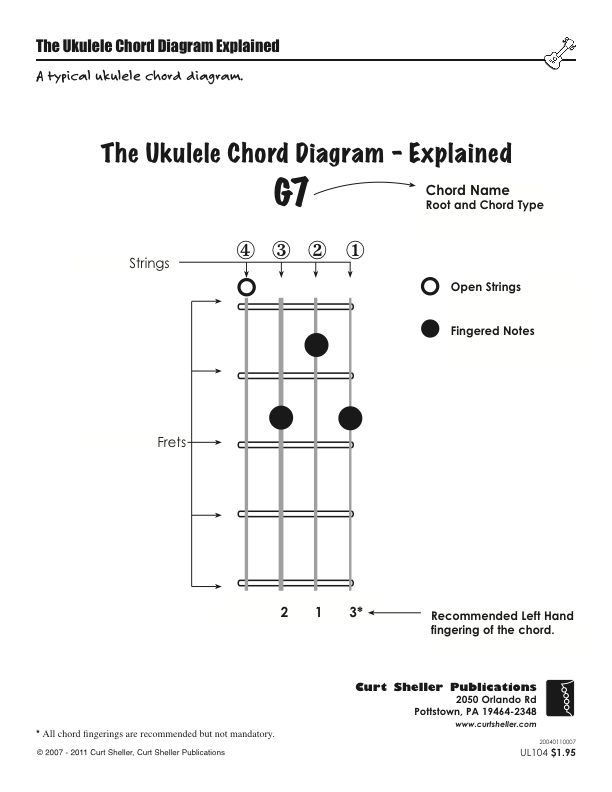
The Quarter Note Strum - Variations
Learning an instrument is about building on what you already know. This is a perfect principle for building on strumming patterns.
- LESSON: Quarter Note Strum - Variations
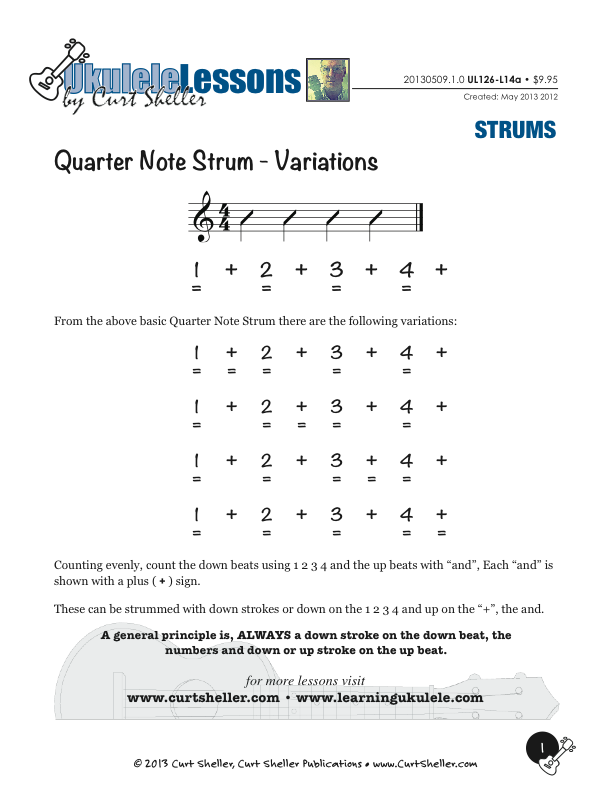
Whole Steps, Half Steps
There is only one scale that contains ALL 12 notes of music in one octave, the Chromatic Scale.
- LESSON: Whole Steps and Half Steps Explained
- LESSON: The Chromatic Scale
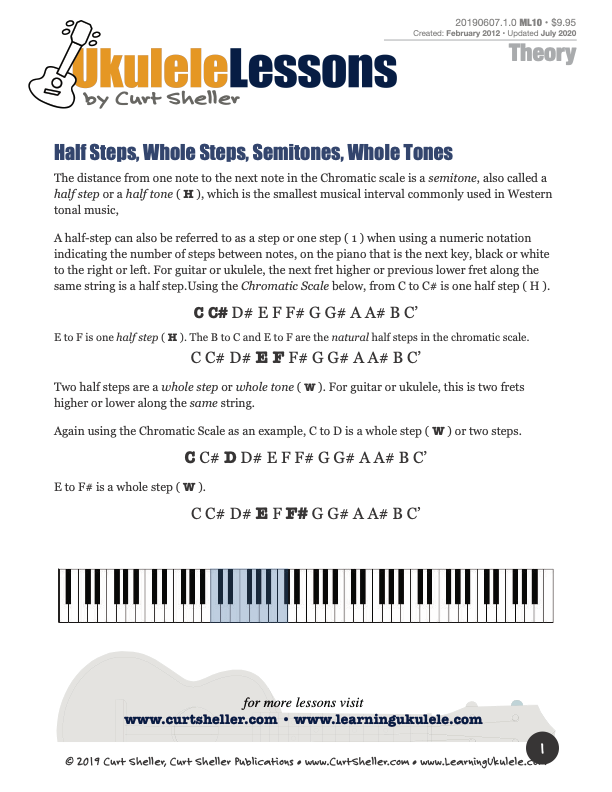
Related Lessons, Videos, Lesson Series, Songs, Books & Reference Charts, Resources & Assets, Workshops are below.

Nothing when learning a fretted musical instrument like the ukulele returns more value than really, and I mean really knowing the names of the notes of the ukulele fingerboard. This is not the same as learning to read music — but simply knowing the name of any note on the fingerboard.
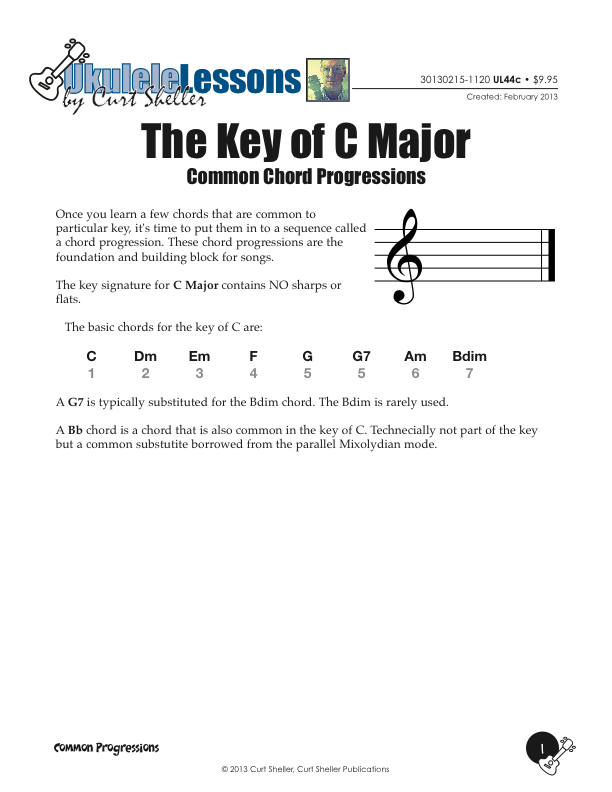
Sometimes called the “learning key”, the key of C Major is one of the easiest keys to memorize and begin using. C major (often just C or key of C) is a musical major scale based on C, with pitches C D E F G A B C. Its key signature has no flats or sharps. Its relative minor is A minor A B C D E F G A B.

To play the ukulele effectively, your fingers need physical strength, agility, flexibility and coordination. This two finger-two note drill is designed to get your hands in shape. These exercises work no matter what style of ukulele you play or want to play.

Learning the names of the notes on the fingerboard is indeed a crucial skill for any musician, especially those who play stringed instruments like the guitar, violin, or cello. Having a solid understanding of the notes on the fingerboard can significantly enhance your playing, improvisation, and overall musicality. Here's a step-by-step approach you can follow to learn the fingerboard:

Modular Phonetic Rhythm represents a significant advance in the teaching and application of rhythm. Eliminating many inefficient aspects of rhythm education, Modular Phonetic Rhythm streamlines the traditional educational approach, resulting in a reflexive reaction to rhythm.
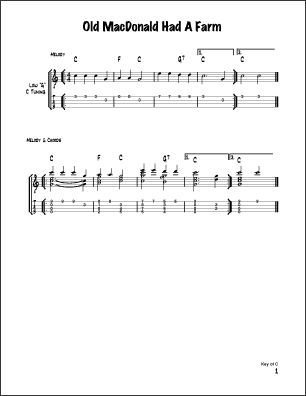
Old MacDonald Had a Farm is a children's song and nursery rhyme about a farmer named MacDonald (or McDonald, Macdonald) and the various animals he keeps on his farm. Each verse of the song changes the name of the animal and its respective noise. In many versions, the song is cumulative, with the noises from all the earlier verses added to each subsequent verse. It has a Roud Folk Song Index number of 745.

Finally, learn the names of the notes of the fingerboard. Learning the notes of your instrument allows you the flexibility of not having to remember so many shapes. There are simply way too many chords, scale and notes patterns, and shapes to remember. It all comes down the notes.
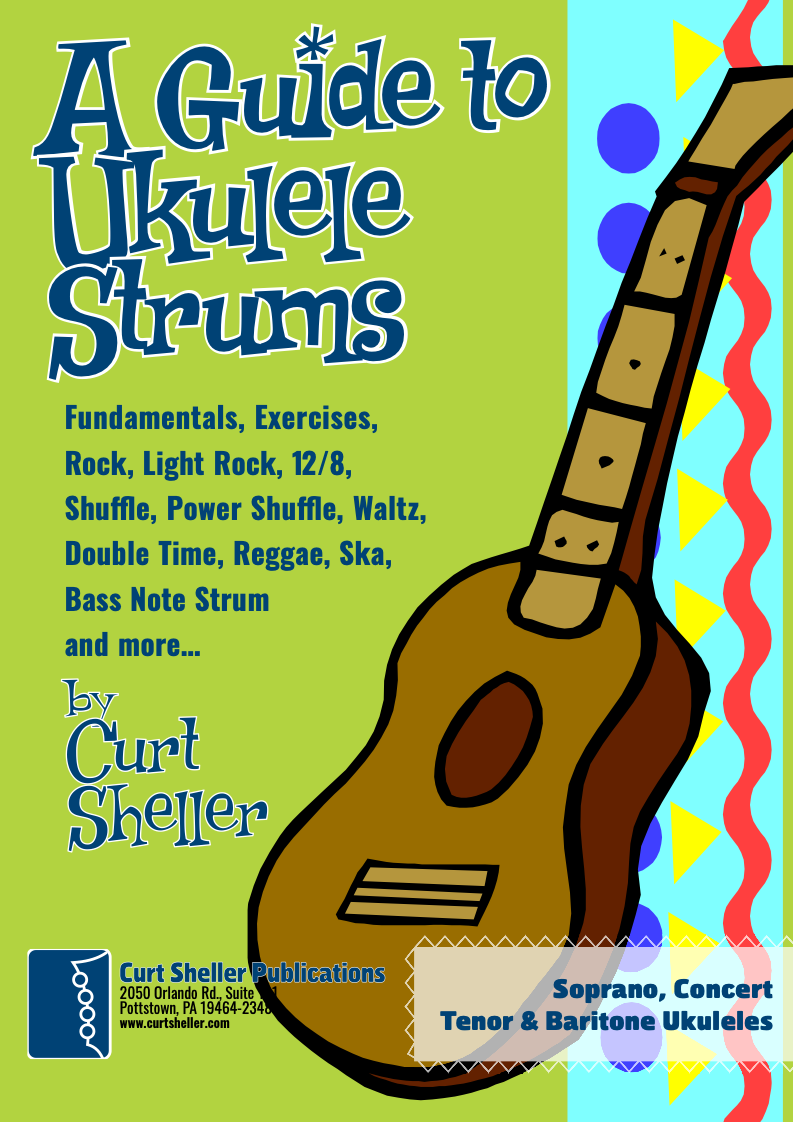
Learn a variety of strums and rhythmic patterns in wide range of musical styles. One of the first skills a ukulele player learns is the art and craft of strumming, playing rhythm. This refers to an accompaniment technique suitable for the singer, singer - songwriter or someone who plays a support role for another instrument.

Finally, learn the names of the notes of the ukulele fingerboard in C tuning .

Learn the six fingering principles to navigating the ukulele fingerboard. Fingering is one of the most universal topics. Book: Six Secrets of the Ukulele Fingering

Harmonic Analysis is the understanding of the functional sequence of chords. It is the process used to analyze the harmonic structure of a progression, song or composition. Book: Harmonic Analysis for Scale Selection and Chord Substitution

Learn to read single note melodies in the first/open position is a lot easier than you might think. Book: Ukulele – Reading Music Series – Primer

An organized collection of daily practice and reference material for the contemporary ukulele player for developing the vocabulary and knowledge necessary for single note playing. Book: Daily Practice Material for the Contemporary Ukulele
Checkout the Books & Reference Charts for additional Handy, Dandy Reference Charts.

Ukulele Fingerboard Chart for C Tuning, Low or High G – G C E A

Ukulele Fingerboard Chart for G Tuning, Low or High A – D G B E

A handy reference chart of all 15 major and relative minor key signatures. US Letter 8.5 x 11 sized (ANSI-A), A4
Checkout the Books & Reference Charts for additional Handy, Dandy Reference Charts.
Getting Started with `Ukulele - Lesson Two.



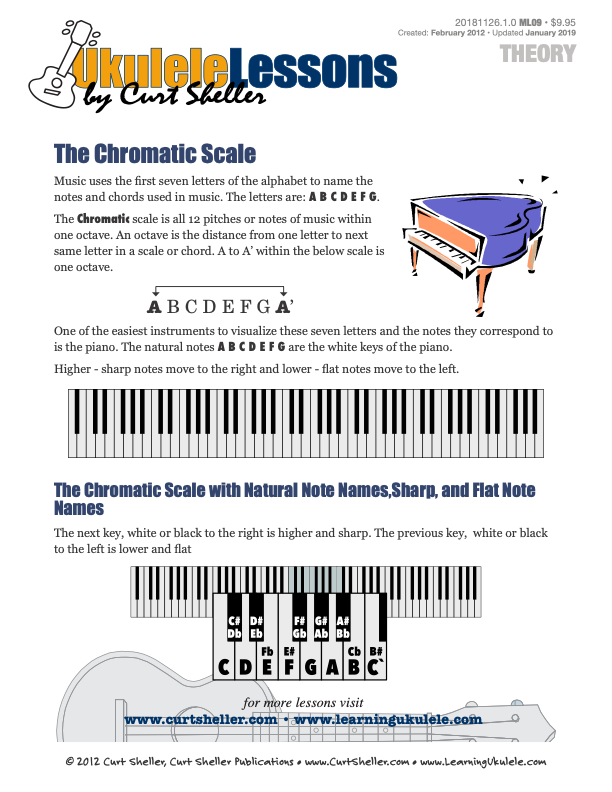
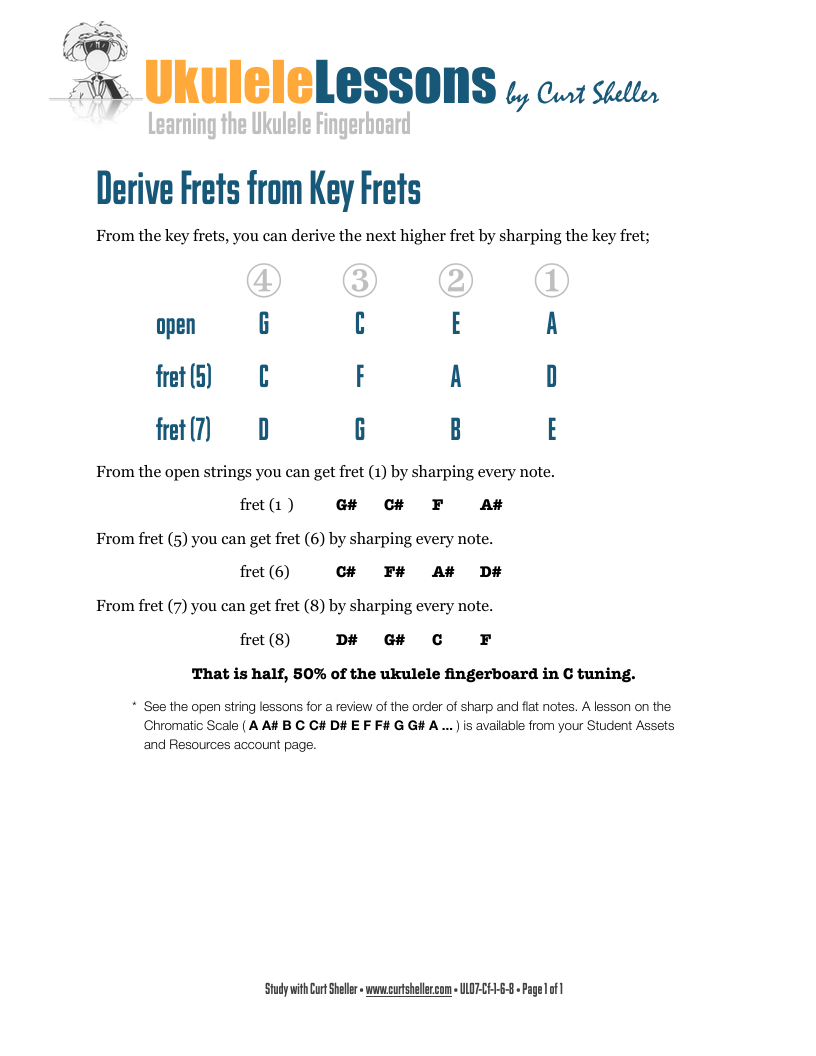





.jpg)